Man says wife was killed by pipe coming through car windshield
[This story originally aired on January 29, 2022. It was updated on September 3.]
Todd Kendhammer said his wife Barbara was killed in a freak accident when a pipe smashed into the windshield of their car in 2016. A Wisconsin jury didn't believe him, and he was sentenced to life in prison. Their children believe he's innocent. Now, his new legal team says there is evidence the jury never heard. Will a judge grant a new trial?
Every year, where the Mississippi widens out on its steady journey south alongside the river town of La Crosse, Wisconsin, bald eagles gather.
Lofty symbols of freedom, they soar close to the remote country road where 46-year-old Barbara Kendhammer was fatally injured. The circumstances, so unusual, made headlines and sent her husband Todd to prison for life.
Kathleen Stilling: I just became fascinated by the story that I saw unfolding here.
Now, Todd Kendhammer's appeals team says his murder conviction is the true injustice that occurred in this controversial case.
Erin Moriarty: Do you believe that Todd Kendhammer had anything to do with the death of his wife?
Kathleen Stilling: No.
Jerry Buting: This was an accident.
Erin Moriarty: You don't believe there was a murder at all?
Jerry Buting: Not at all. This is not a murder case.
Lawyer Jerry Buting is best known for defending Steven Avery, on Netflix's "Making a Murderer." And now, along with attorney Kathleen Stilling, who also happens to be his wife, they've taken on Todd's case, which they say should be measured by his marriage to Barbara.
Kathleen Stilling: Their relationship was really special. … that was one of the things that really drew me to this case. … The idea that out of the blue he would snap and kill his wife and then stage the accident, it just seems so implausible to me.
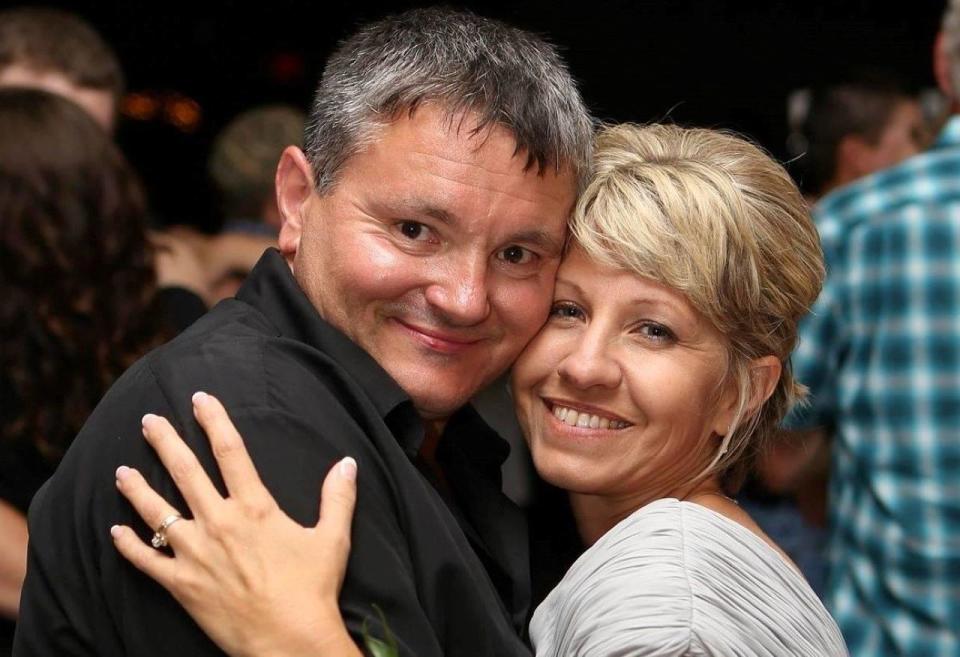
They insist this isn't a murder mystery. It's an old-fashioned love story that ended in a tragic accident. During his trial, Todd told the court that he fell for Barbara, at first sight.
TODD KENDHAMMER [on the stand]: …just one of those things where you know immediately that's the girl you want.
Both were just 16. Friends at first, they began dating in 1989. And in August 1991, they sealed the deal.
Soon Jessica and then Jordan came along. Witnesses, they say, to a romance.
Erin Moriarty: How would you describe your dad?
Jessica Servais: Well, mom always called him a wild hare (laughs).
Jordan Kendhammer: He was always, always, always on the go and always has some new crazy idea.
Jessica Servais: And she just was all about going with him for anything.
To the kids it was clear. Todd adored Barbara.
Jessica Servais: He's just always like doting on her with stuff.
Erin Moriarty: Did your parents argue more than any other couple?
Jessica Servais: Definitely not.
Jordan Kendhammer: I would say not.
Jessica Servais: Whatever my mom wanted my dad gave it to her (laughs).
Barbara worked in the cafeteria at the West Salem Middle School. Todd worked at a factory making aluminum soda cans. On the side, he flipped houses with Barb.
Jessica Servais: That was like the biggest out-on-a-limb thing, he's like "Let's buy a house and flip it," and we're just like, "OK" (laughs).
For extra income Todd also worked with glass, replacing people's smashed and broken windshields. They paid their bills and lived comfortably.
Jessica Servais: They were just in a really good time in their lives 'cause they had their first grandchild, and they were well off.
In 2016 Jessica and Jordan threw their parents a surprise 25th anniversary party.
Jessica Servais: And everything was perfect. It was good.
Erin Moriarty: Until it wasn't.
Jessica Servais: Yeah.
It was a month later, September 16, 2016. The Kendhammer family was preparing for their annual camping trip. The plan was to leave later that day after Barb finished work.
Jordan Kendhammer: I woke up in the morning. … Ma and dad were still home. I heard mom in the kitchen.
It was early that morning. Jordan, home from college, says he heard the garage door open, and his parents' car leave. No arguing. Nothing unusual, he says, just his dad, likely driving his mom to work at school.
Jordan Kendhammer: If he had off, he'd take her to work and he'd go about doing his errand things. And then when he got done, he'd pick her up.
A little after 7:45 a.m., the couple stopped at the home of a neighbor. They were looking after her house while she was away and stayed just a few minutes. And then, surprisingly, instead of heading to Barbara's school, Todd headed north — away from it. Why he did would become a critical question.
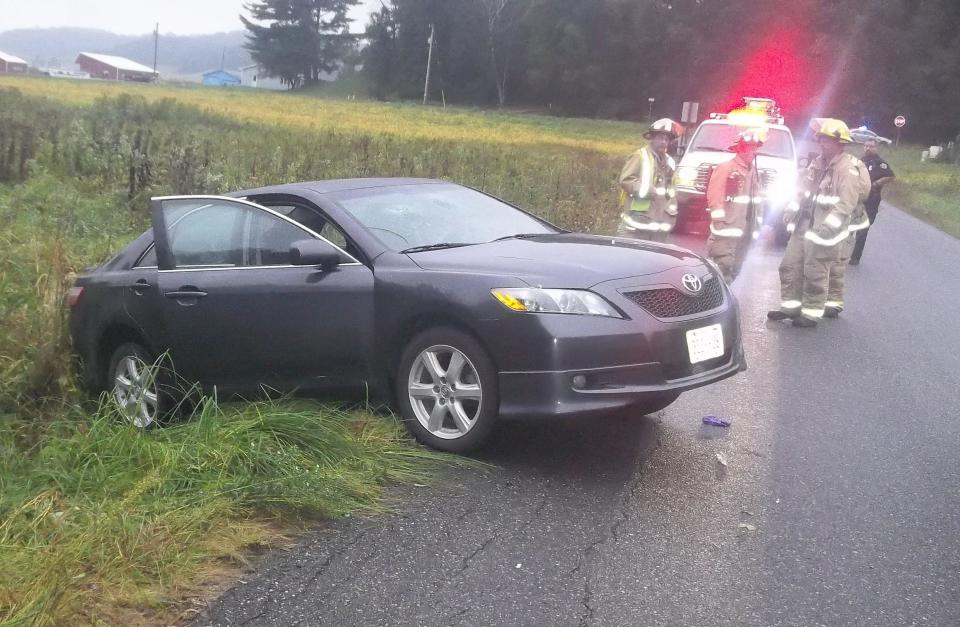
At 8:05 a.m., a distraught Todd made that call to 911. He said there had been a horrible accident. And Barbara was badly hurt.
911 OPERATOR: 911 what is the address of the emergency?
TODD KENDHAMMER: … She's hit in the head and in the throat. I think in the throat or something.
At the scene, Todd began to tell his version of what happened:
OFFICER: There was a pipe in the ground?
TODD KENDHAMMER: No, it came out of that tree, off a truck.
OFFICER: Off a truck?
TODD KENDHAMMER: A truck, or a trailer or something.
Barbara was rushed to the hospital.
TODD KENDHAMMER: Is she OK?
OFFICER: I can't tell you that. I don't know.
Placed by police into a squad car, Todd continued with his account:
TODD KENDHAMMER: [in police car] I thought it was a bird at first … And then at the last minute I seen it was a pipe.
Soon Jessica and Jordan met their father. He seemed devastated. His T-shirt soaked in blood.
Jessica Servais: He was pale and shaky and panicky and wanted to know how she was doing, like, all the time.
Erin Moriarty: Tell me what he told you about the accident.
Jordan Kendhammer: They were driving and … something came, and it hit mom.
Jessica Servais: I was like, how did a pipe hit her? … he said it came through the windshield, and I pulled it out of the windshield.
Erin Moriarty: How did you find out how seriously your mom was really injured?
Jessica Servais: The neurosurgeons kept coming in and giving us updates, but the way that they were talking her prognosis was pretty poor.
The start of a family holiday fast turned into an all-night bedside vigil. It wouldn't last long.
Jessica Servais: I think it was like 4 or 5 or something … and they actually pronounced her, like, brain dead.
Erin Moriarty: How did your father deal with that news?
Jessica Servais: He was just very upset.
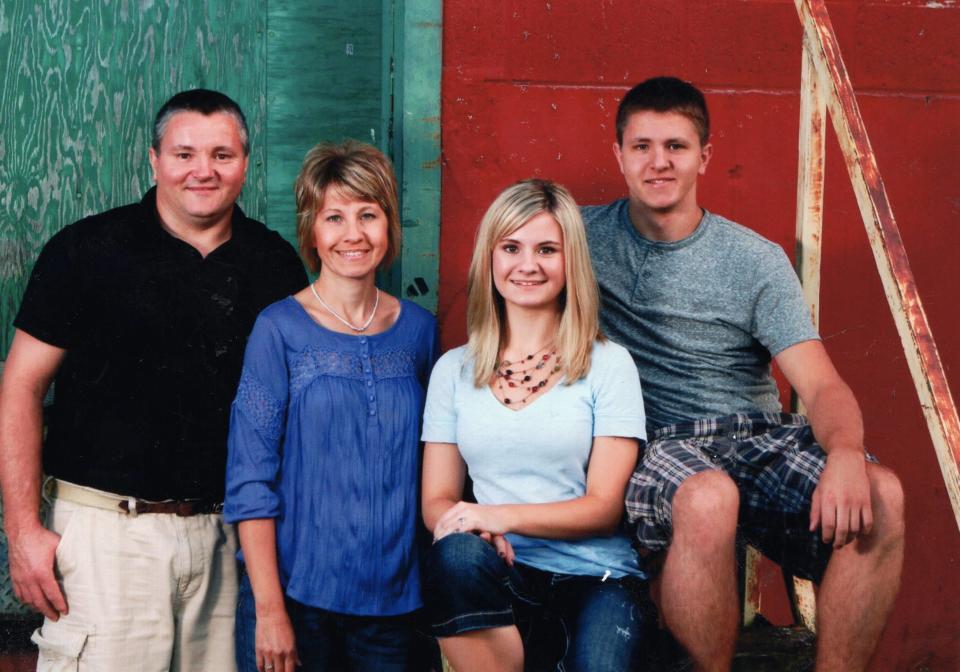
As dawn broke over the Mississippi, Barbara Kendhammer — wife, mother, grandmother — took her last breath.
Jessica Servais: She was gone.
The family mourned. They had already made the tough decision to donate Barbara's organs. But things would soon get even tougher. Police were already suspicious of Todd.
OFFICER (at the scene): Take pictures of Todd. His front, all the blood, his knuckles, everything.
At the scene of the incident, officers had noticed Todd's bloodied knuckles. And he had what appeared to be scratch marks on his neck.
Prosecutor Tim Gruenke: The police kept finding one more step and one more step that would disprove his story.
THE CASE AGAINST TODD
Erin Moriarty: So how big is this pipe, Tim?
Tim Gruenke: 53 inches long. And it weighs about 10 pounds.
Erin Moriarty (lifts pipe): This thing is heavy.

Todd Kendhammer says the pipe flew off a truck, smashed into the windshield of the car he was driving and caused his wife Barbara's death — a story that Prosecutor Tim Gruenke says is simply preposterous.
Tim Gruenke: Our theory is that he used that himself to put the hole in the windshield. It didn't fly off of a truck going by.
Tim Gruenke: Todd said he was traveling north on Highway M.
Gruenke says that police became suspicious of Todd when pieces of his story just didn't seem to add up, starting with that mysterious truck.
Tim Gruenke: He turned right onto Bergum Coulee Road.
This is the description Todd Kendhammer gave police on the way to the hospital:
TODD KENDHAMMER: It was a older, like a bigger flatbed-looking truck … Like a pickup truck with a flatbed on it.
INVESTIGATOR: What color was the cab?
TODD KENDHAMMER: I don't even remember. It was darker, I don't — that's all I know. Dark green or dark blue.
Erin Moriarty (at the scene, pointing at road): So, he's going this way and he claims that the — that a truck carrying a pipe was going this way?
Tim Gruenke: Correct.
Erin Moriarty: Were you ever able to find a truck?
Tim Gruenke: No. Police spent some time looking for the truck and putting out word to the community to ask if anybody saw a truck that day.
Surveillance video from a horse ranch down the road does show what appears to be the Kendhammer car pass by at approximately 7:57 a.m. on the day of the incident. But at around the same time, no truck that matched the description Todd gave police was ever seen heading in the opposite direction.
And then four days after the incident, Medical Examiner Dr. Kathleen McCubbin conducted an autopsy on Barbara.
Tim Gruenke: She didn't understand when she first heard a pipe had done it. She had called law enforcement to look at the pipe 'cause she didn't understand how that could be.
Barbara had three lacerations on the back of her head.
Tim Gruenke: She said that the injuries to Barb were very inconsistent with a pipe of that size and that weight coming through the windshield.
She concluded that Barbara died of "blunt trauma injuries of the head and neck, with skull fractures … cricoid cartilage fractures … and ultimate brain death." The cricoid is the ring-shaped bony cartilage structure located in the lower neck.
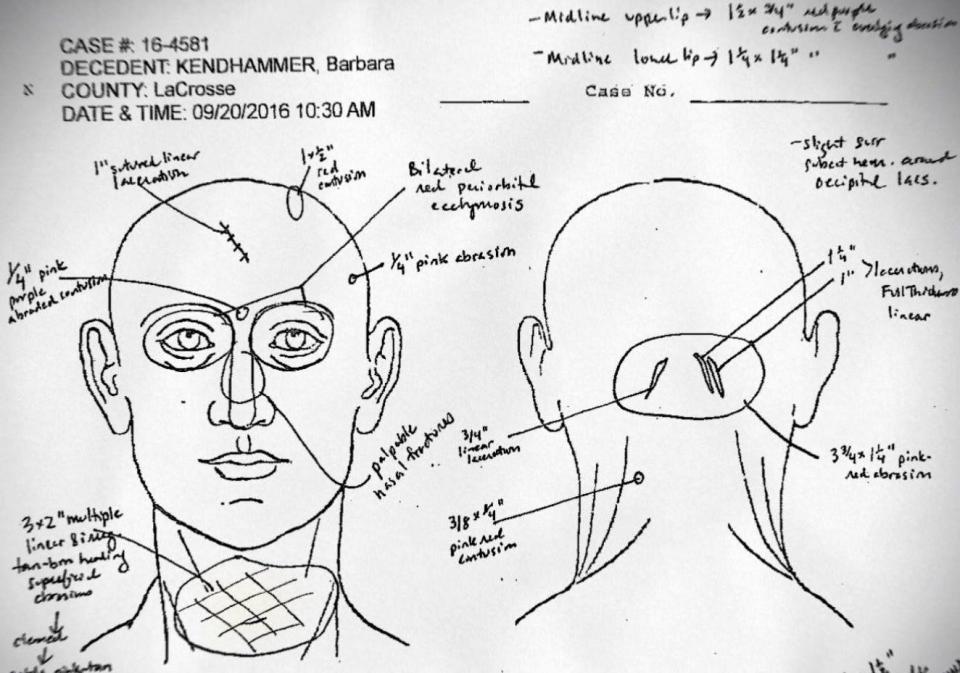
Erin Moriarty: What do you believe caused the broken cricoid cartilage?
Tim Gruenke: It's consistent with strangulation.
The medical examiner also noted that there were countless other injuries on Barbara that suggested there could have been an earlier struggle. She had scratches on her neck, a broken nose, a laceration on her forehead and bruising all over her body.
Tim Gruenke: She had some injuries to her fingers.
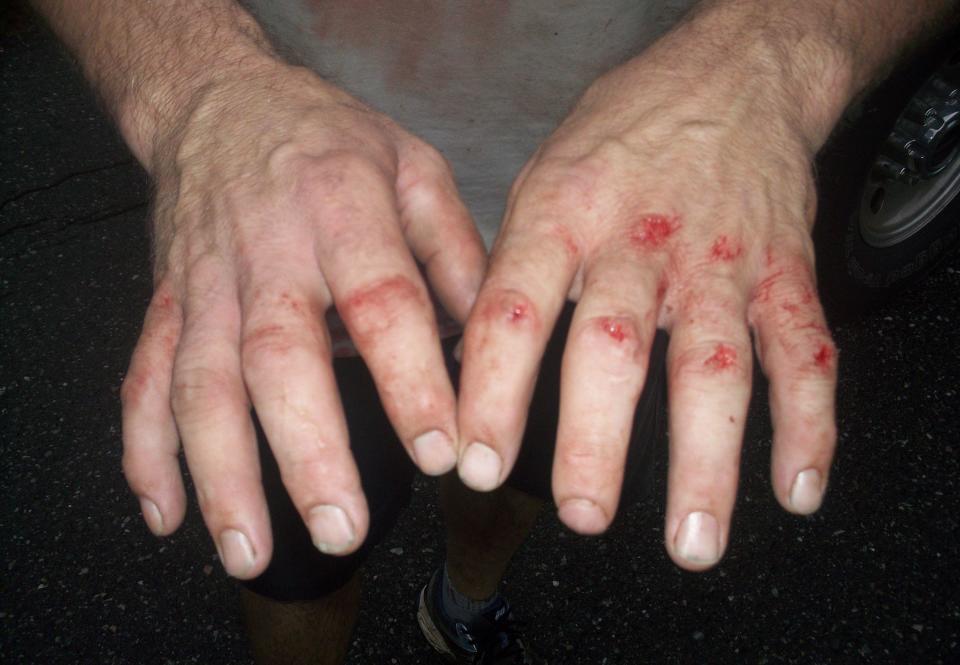
Todd also had injuries to his hands.
Tim Gruenke: He said that came from striking the windshield when he saw something flying at him.
And he had what appeared to be scratches on his neck and chest as well.
Tim Gruenke: He said he got that 'cause he worked with glass. It turns out he doesn't work with glass. He puts in windshields. But he doesn't normally work with glass or broken glass. So those injuries seemed odd. … It seems consistent like someone who was in a fight. A really bad fight.
Police had also interviewed a construction worker who said he drove by the Kendhammer car around 8 a.m. but didn't see any damage to the windshield or any people around.
Tim Gruenke: He saw the car in the ditch. … And thought maybe somebody had just driven off the road or tried to make a turn and got stuck.
Erin Moriarty: So, he didn't see anybody. He didn't see either Todd or Barbara?
Tim Gruenke: Correct.
Erin Moriarty: Could they have been hidden in the high grass?
Tim Gruenke: Well, that's the only thought is that … he was maybe trying to hold her down and keep her from calling for help.
There were other red flags. On the day of the incident Barbara was scheduled to work at 8 a.m., but she never called to say that she'd be late. She also did not make her daily call her to her mom.
Tim Gruenke: As a woman who has never been later for work, who always calls her mom … when you look at, that's an obvious change of the pattern.
And where were Todd and Barbara driving to that morning, going in the opposite direction from Barbara's work?
This is what Todd Kendhammer told investigators on the drive to the hospital:
TODD KENDHAMMER: I'm gonna put a windshield in a truck for a guy.
INVESTIGATOR: So, is the windshield you were going to replace in somebody's driveway or?
TODD KENDHAMMER: In his truck. I was gonna take it to my house.
Todd told police that, on the way to drive Barbara to work, he decided to drive over to pick up a truck that needed a windshield replaced. He said the truck, with keys inside, was in the driveway of a person he knew from work named Justin Heim.
INVESTIGATOR: Did you call the guy?
TODD KENDHAMMER: No, I didn't call him. … I was just gonna swing over and if it was there grab it.
But when the investigators spoke with Justin Heim, he told a very different story.
Tim Gruenke: When the police looked into that, they found Justin Heim never had ordered a windshield from Todd, didn't need a windshield. Todd didn't even know where he lived.
So just one week after Barbara's death and just two days before her funeral, investigators asked Todd to come down to the police station under the ruse that they had some leads on trucks that may have dropped the pipe that day.
TODD KENDHAMMER [in interrogation room, opening pill container]: Is it OK if I take that? I didn't take my medicine this morning.
INVESTIGATOR: Yeah, that's fine.
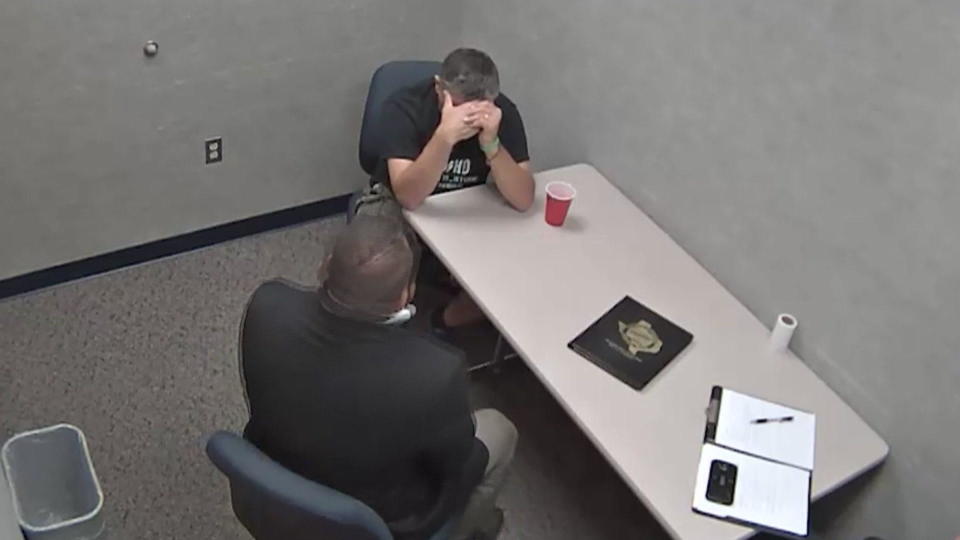
As investigators began to question him, Todd told them he had not taken his anti-anxiety medication, and he appeared confused and forgetful of details.
TODD KENDHAMMER [distraught, holding his head in his hands]: And — I — I — I — just don't — remember, I remember — and I don't know how … I remember — I remember the worst part was when I looked — the pipe was — the pipe was there …"
Jessica Servais: He was trying to help. Like he thought they were trying to help him find the cause of the accident.
INVESTIGATOR: How did the pipe get through the windshield, let's start there.
TODD KENDHAMMER: The pipe — I don't — It came off a truck.
But they were closing in on what they believed were Todd's lies.
INVESTIGATOR: There's no explanations for it. You can't — the injuries that were on Barb did not occur from that accident, from a pipe going through your windshield.
And then, when police pressed him about where he was actually going that day, Todd Kendhammer changed his story.
INVESTIGATOR: I talked to Justin.
Tim Gruenke: He … told a story that he wasn't going to Justin Heim's house. It was actually a friend of Justin's.
Police would later find that friend who told them he also didn't need a windshield and was not expecting Todd the day of the incident.
Erin Moriarty: Isn't it possible he was in shock? Isn't it possible that he just can't remember anything from that time?
Tim Gruenke: Part of it. … I could see somebody not remembering a detail or two. Not remembering something traumatic. But the things that surround it you usually do remember. … So, things like remembering where you were going.
After 3-and-a-half hours of questioning Todd, investigators let him go home, but they kept building their case.
Tim Gruenke: Do I know exactly blow-by-blow how it happened? No, I don't. But I know it didn't happen from a pipe coming off a truck.
Three months after Barbara's death, Todd Kendhammer was arrested.
Jessica Servais: We were basically just like, "Well how we get him back out?" Because he is not supposed to be in there …
Jessica hoped a jury would believe her father when Todd took the stand to tell his side of the story at his trial.
Tim Gruenke: I think he just looked like somebody who was trying to explain away his lies.
EXAMINING THE EVIDENCE
TIM GRUENKE (trial opening): What started out looking like a tragic car accident would soon become more complicated.
In December 2017 when Todd Kendhammer went to trial for his wife Barbara's murder, almost everyone who attended was there to support him. Yet, his daughter Jessica feared the worst.
Jessica Servais: Every day I was in a constant state of anxiety and couldn't eat and couldn't sleep.
DR. KATHLEEN MCCUBBIN | Medical examiner: The cause of Barbara Kendhammer's death was blunt impact injuries of her head and neck.
The state's star witness was Medical Examiner Dr. Kathleen McCubbin.
DR. KATHLEEN MCCUBBIN: I did not believe that these injuries are consistent with the end of a pipe striking the back of the head.
Todd's trial lawyer Stephen Hurley didn't call a forensic pathologist of his own to dispute the state's case but tried to create reasonable doubt during cross-examination.
STEPHEN HURLEY: If her head were moving at the time of the pipe coming through, the pipe had the potential, because it is some 5 feet long, to strike her head in more than one place, is that correct?
DR. KATHLEEN MCCUBBIN: That may be possible, yes.
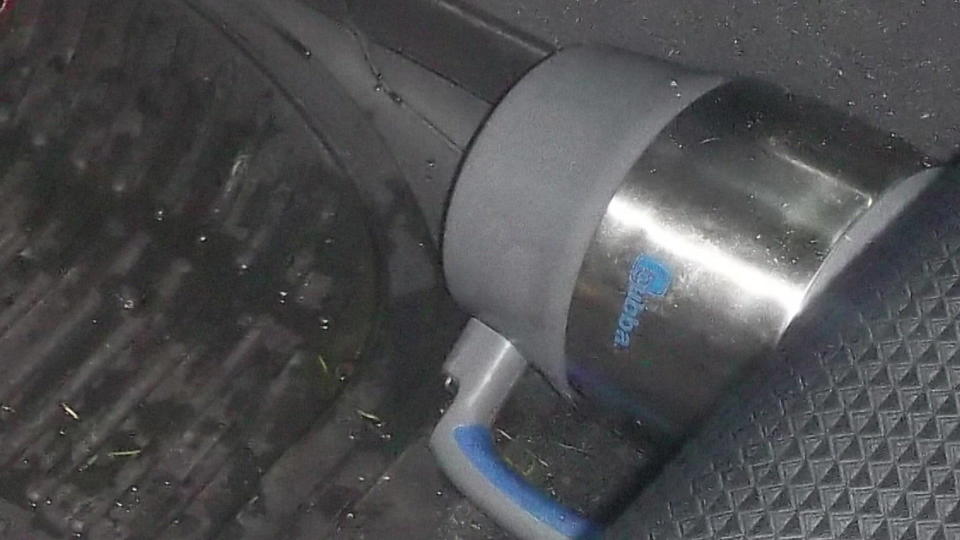
Attorney Hurley asked McCubbin if Barbara's large water mug could have slammed into her face if she ducked to avoid the pipe and caused some of the injuries.
DR. KATHLEEN MCCUBBIN: Yes, it could be. It's a possibility.
But when Hurley questioned Dr. McCubbin, he didn't focus on one of the critical injuries that Barbara suffered – the cricoid fracture – which the prosecution insisted could only have been caused by Todd.
Tim Gruenke: And it could have happened in a multitude of ways, but I believe during the fight, her cricoid fracture happens.
MARK MESHULAM (showing photo of the windshield): This is the view of the inside of the car looking out.
The windshield of the car was as hotly disputed as the medical evidence. The defense's expert, Mark Meshulam, with over 30 years of experience working with glass, believes the evidence supports Todd's story.
MARK MESHULAM: By observing the crack branching ...
The fracture patterns on the windshield, he said, show three different events.
MARK MESHULAM: The first one was a hand impact, when Mr. Kendhammer's fist went into the glass.
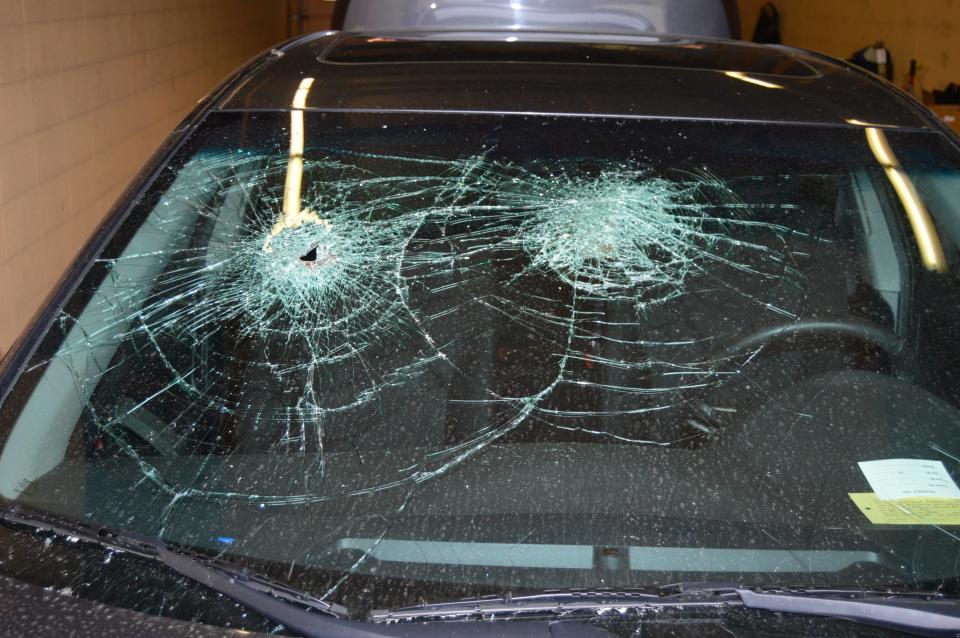
The second event was the puncture when the pipe broke through the windshield. And the third, harder to detect, was caused, he said, when Todd removed the pipe from the windshield.
NICK STAHLKE: The lines that are highlighted here would indicate those impact points.
But the state's forensic expert Nick Stahlke said the impacts didn't occur in the order that Meshalum said they did. District Attorney Gruenke argues this is more evidence showing that Todd Kendhammer intentionally damaged the windshield, and it was not from a pipe falling off a truck.
Tim Gruenke: It couldn't have done what he said it did. … The crime lab found that the windshield had two strikes on the outside which is impossible. However the pipe comes, it's not going to hit, back up again and hit again.
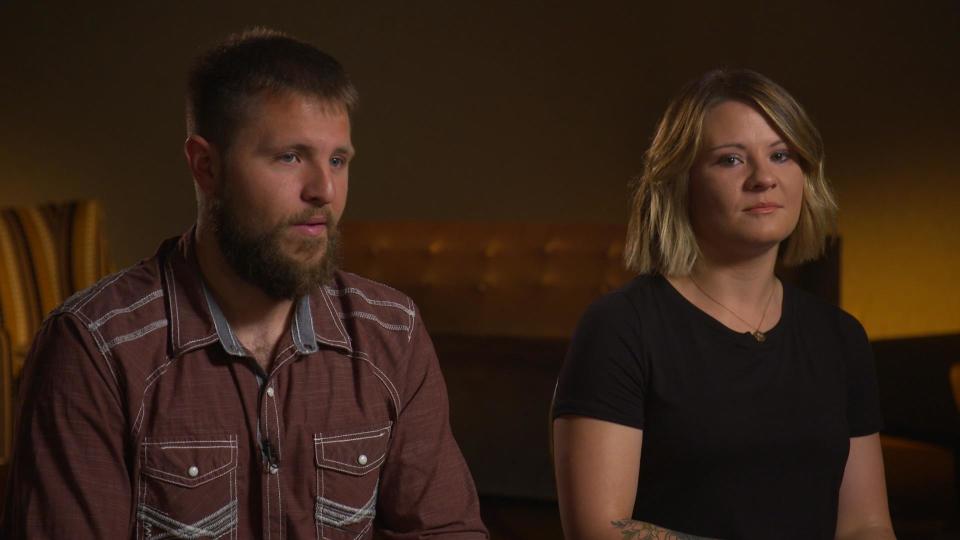
Jordan Kendhammer: If he wanted to kill ma, why the hell would he go through all the work and trouble to find a pipe, drive all the way out to the middle of a busy road —
Jessica Servais: He has like 28 guns in the basement …
Jordan Kendhammer: More than that.
Jessica and Jordan don't believe prosecutors ever answered critical questions about what happened.
Jessica Servais: They never really said how he killed her or what he did to stage everything. If what they're saying is he staged it and killed her at the same time, the time frame doesn't fit up either. You don't have enough time to do all that stuff.
Because that construction worker drove by at 8 a.m. that morning, Todd had just 5 minutes to stage the crime before he called 911 at 8:05 a.m.
Erin Moriarty: So, in that short period of time he had the presence of mind to go get the pipe out of the trunk, go around, break it twice … and call 911 and administer CPR.
Tim Gruenke: Yes. … He can do a lot of damage in 2 or 3 minutes. So, it's more time than people think.
JUDGE TODD BJERKE: Mr. Hurley, you'll be calling your next witness?
STEPHEN HURLEY: Yes, I call Todd Kendhammer.
With so much at stake, the defense decided to gamble by putting Todd Kendhammer himself on the stand.
STEPHEN HURLEY: Did you ever strike Barbara Kendhammer?
TODD KENDHAMMER: No.
Todd tried to explain to the jurors why, during the police interrogation, he told investigators conflicting stories about where he was going that morning.
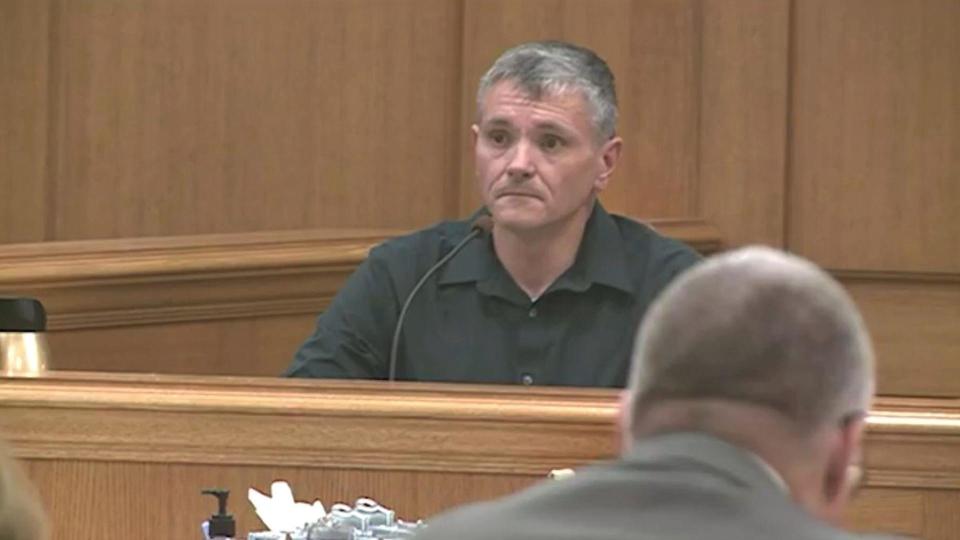
TODD KENDHAMMER: When I watch that video it's me in the picture, but it's not me talking. I'm not in the right state of mind talking in that. I wasn't thinking of where I was going or what I was doing. I was thinking of Barb.
Todd seemed to be doing well …
JUDGE TODD BJERKE: Mr. Gruenke, you may begin your cross-examination.
… until he had trouble remembering details about that day:
TODD KENDHAMMER: I don't recall if I said that or not.
TODD KENDHAMMER: I don't remember that.
TODD KENDHAMMER: I can't recall for sure.
But his most damaging testimony may have been when he changed his story yet again. He told the jury about a third person he was supposedly going to see on the day of the incident: Jared Loging.
TIM GRUENKE: And today you say you were trying to find the house of Mr. Loging?
TODD KENDHAMMER: Correct.
Tim Gruenke: So that's another kinda odd statement to make — that that's why you were going that way. And why you couldn't have told police that the first time or the second time or in the year before trial.
And just like the others Todd said he was going to visit that morning, Loging said he had never arranged for Todd to replace a windshield.
TIM GRUENKE: Did you change your story for trial because you knew police had figured out your lies?
TODD KENDHAMMER: No.
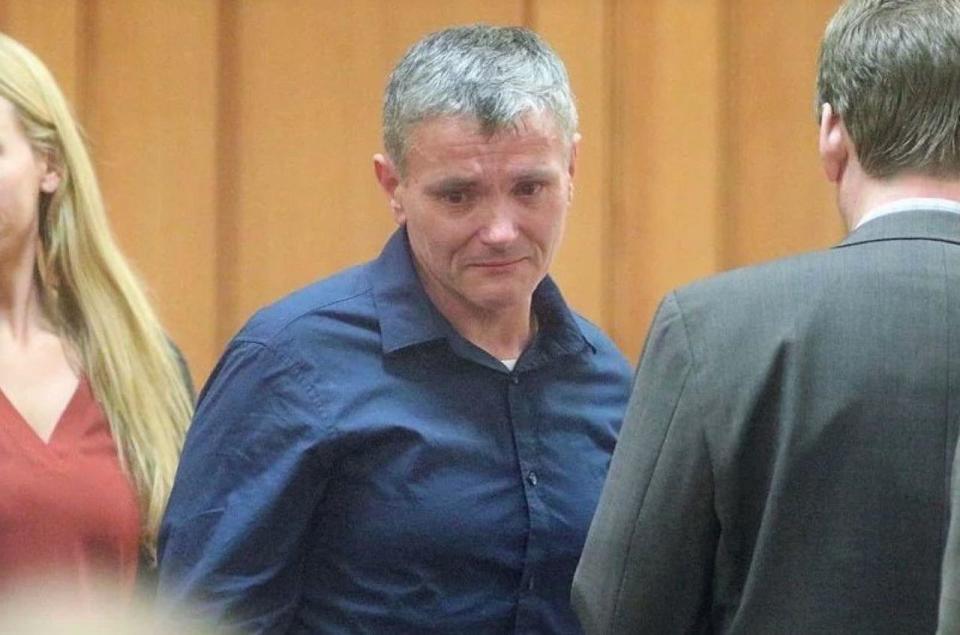
JUDGE TODD BJERKE: We the jury find the defendant Todd A. Kendhammer guilty …
The jury was out just 9 hours before they reached their verdict. Three months later, everyone was back in the courtroom. The conviction had an automatic life sentence, but it was up to the judge to decide if Todd Kendhammer would be eligible for parole.
GERIANNE BUCHNER WETTSTEIN [on the stand]: I am here today. I do not stand alone.
Jessica and Jordan were stunned when Gerianne Buchner Wettstein, their mom's cousin, spoke out against Todd and read a letter signed by several other cousins.
Jessica Servais: I just remember thinking, like, "wow!"
GERIANNE BUCHNER WETTSTEIN: Barbara found the courage that day to fight back. Therefore, we stand here today, united with that same courage asking you to sentence her killer to the maximum penalty possible.
But Jessica says Gerianne had been estranged from their mother.
Jessica Servais: She basically painted this scene that … she just feels so bad about my mom and her big blue eyes, even though her eyes are green. … My mom hates her.
"48 Hours" reached out to Gerianne and she denies Jessica's claims that she was estranged from Barbara. But her testimony wasn't the only surprise that day. Gruenke had some harsh words for the Kendhammer family, who had to sell Todd and Barbara's home and Jessica's house to pay Todd's legal bills.
TIM GRUENKE [at sentencing]: Pardon my language, but to be perfectly frank they need to get their head out of their ass. They need to start looking at this in reality …
Jessica Servais: I don't think you should be able to talk that way in a courtroom. If you can think that to yourself, that's fine because I also think you're an ass, but I'm not going to say it out loud.
Jordan Kendhammer: At least word it different.
Erin Moriarty: Don't you think you may have added to their pain at that sentencing by saying that?
Tim Gruenke: I think I have to open their eyes in some way. … I think they are giving him false hope. And I think he's dragging them down with him by using all their money to continue in his lies.
The judge ruled Todd Kendhammer would be eligible for parole after 30 years. But Todd's case is far from over.
NEW EVIDENCE PRESENTED
Todd Kendhammer's verdict was guilty. But Jessica and Jordan are determined to clear his name.
Jessica Servais: Because he didn't do it. … And he doesn't lie. So, when he says he didn't do it, we believe him.
That belief is why Barbara and Todd's children brought on Jerry Buting and Kathleen Stilling, who understand that undoing a murder conviction is an immense challenge.
Jerry Buting: It's very difficult to reverse a judgement that's become final.
Kathleen Stilling: it's kind of like trying to turn an aircraft carrier. It's slow … and difficult to do.
Still, they overcame a big first hurdle: getting back in court.
Todd Kendhammer was granted an evidentiary hearing. It was a chance to argue that his original defense team had been ineffective, and that there was critical, new evidence.
Jessica Servais: We were grateful that the judge was taking the time to see what we had come up with.
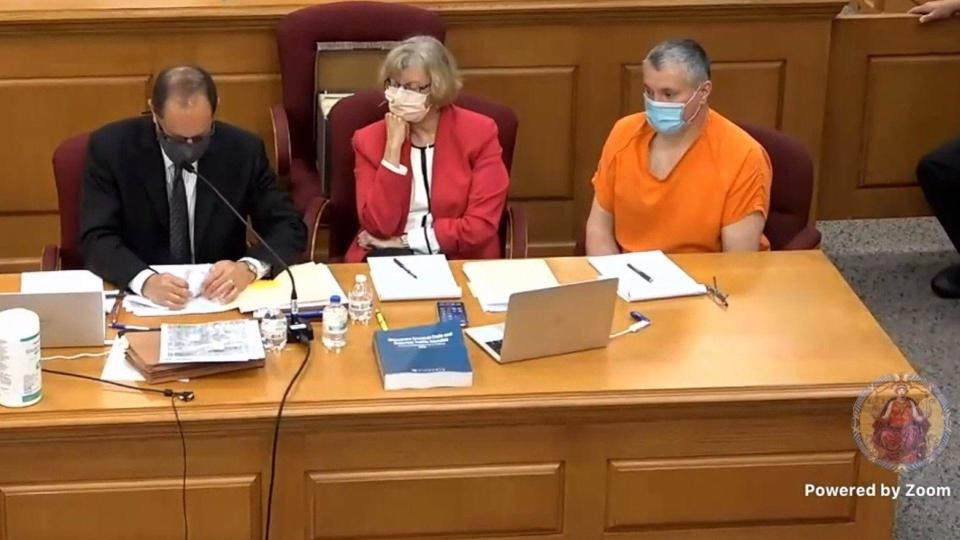
And four years after his conviction for the intentional homicide of his wife Barbara, inmate Kendhammer was back in front of Judge Todd Bjerke.
It opened the courthouse doors a crack, to the possibility of a new trial.
Erin Moriarty: Is this the most hopeful you have felt … that your dad may have a chance to walk out of prison?
Jessica Servais: Yeah.
The burden is now on the defense. Jerry Buting starts by calling a forensic pathologist, something Todd's first defense team had elected not to do.
Jerry Butting: They chose to go a different route. And I think that was serious mistake that really damaged Todd's ability to defend himself.
But now Dr. Shaku Teas, who has performed some 6,000 autopsies, would examine Barbara Kendhammer's medical records and autopsy photos.
JERRY BUTING: Did you observe anything on her body that was consistent with Barbara Kendhammer having been beaten with fists?
DR. SHAKU TEAS: No.
JERRY BUTING: Or that she was a woman who had been in a fight?
DR. SHAKU TEAS: No.
Doctor Teas contradicted the findings of the medical examiner who had performed the autopsy and testified at trial, Dr. McCubbin.
DR. KATHLEEN MCCUBBIN: Yes, some of her injuries certainly could be consistent with an assault or beating as well, yes.
PROSECUTOR SUSAN DONSKEY: Consistent with strangulation?
DR. KATHLEEN MCCUBBIN: It could be, yes.
But for Dr. Teas, the stark photos and silent sketches tell a different story.
DR. SHAKU TEAS: I don't see any injuries on Barbara that I would say are suggestive or consistent with strangulation.
And Dr. Teas suggests that the injury to Barbara's cricoid could be due to that large travel mug.
JERRY BUTING: So, if she had that in her lap when she's moving forward, could that have caused the cricoid fracture
DR. SHAKU TEAS: It could be the mug.
As for the injuries to the back of her head …
Erin Moriarty: If the pipe is coming in … how would she get severe injuries in the back of her head?
Jerry Buting: Because she ducked, and the pipe came through like that (ducks his head and upper body) and grazed the back of her head.
DR. SHAKU TEAS: Barbara Kendhammer died as a result of … an automobile accident.
And Teas believes some injuries seen in the autopsy came from the final act of Barbara Kendhammer's generosity: the harvesting of her donated organs.
But DA Gruenke doesn't buy the theories of Dr. Teas.
Tim Gruenke: I don't put a lot of faith in her testimony.
But when it comes to Todd Kendhammer's guilt or innocence, Buting and Stilling say there is more than just physical evidence to consider.
DR. GEOFFREY LOFTUS [testifying via Zoom]: Something very traumatic and attention-grabbing had occurred, which would likely obliterate any short-term memory that Mr. Kendhammer would have had.
The defense hired another expert, this time in human memory. Dr. Geoffrey Loftus testified that Todd Kendhammer's various stories could be a result of stress from a terrible accident.
KATHLEEN STILLING: Would you say that this was a situation that was ripe for an inaccurate memory?
DR. GEOFFREY LOFTUS: Yes.
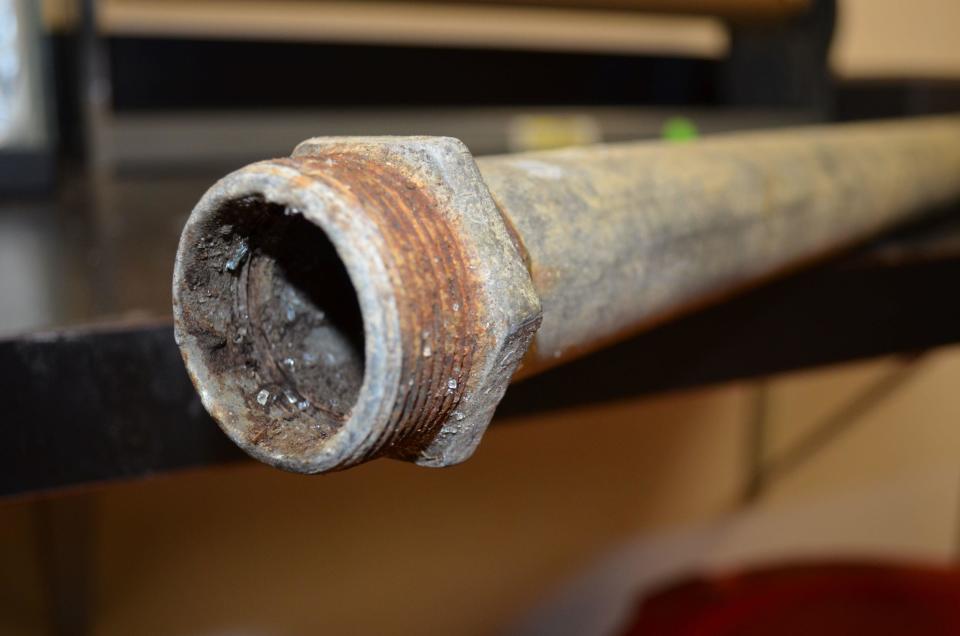
Still the most controversial aspect of this story is about that pipe that Todd claims crashed through his windshield and killed Barbara.
As part of their initial investigation, local authorities had attempted to reconstruct Todd's story of the deadly incident on County Road M.
They tested, and taped, dropping a similar pipe off the back of a truck to see if it could, in fact, bounce. The idea: to determine if a pipe might have bounced high enough to hit the windshield of Todd's oncoming car.
But Kendhammer's lawyers thought the pipe test was inconclusive. They never shared the investigators' video with judge or jury. And neither did the state.
Tim Gruenke: I didn't think we needed it. The defense didn't want it. We just agreed not to use it.
It was only at the new evidentiary hearing that the pipe test was finally presented in court.
Jerry Buting: The first time the judge ever even heard about those experiments was in our motion.
Butting and Stilling shared the pipe test video with "48 Hours."
Erin Moriarty: What you're showing me is that the state's own experts did an experiment that if in fact the pipe bounced like this it could've done exactly what Todd said it did.
Jerry Buting: That's right.
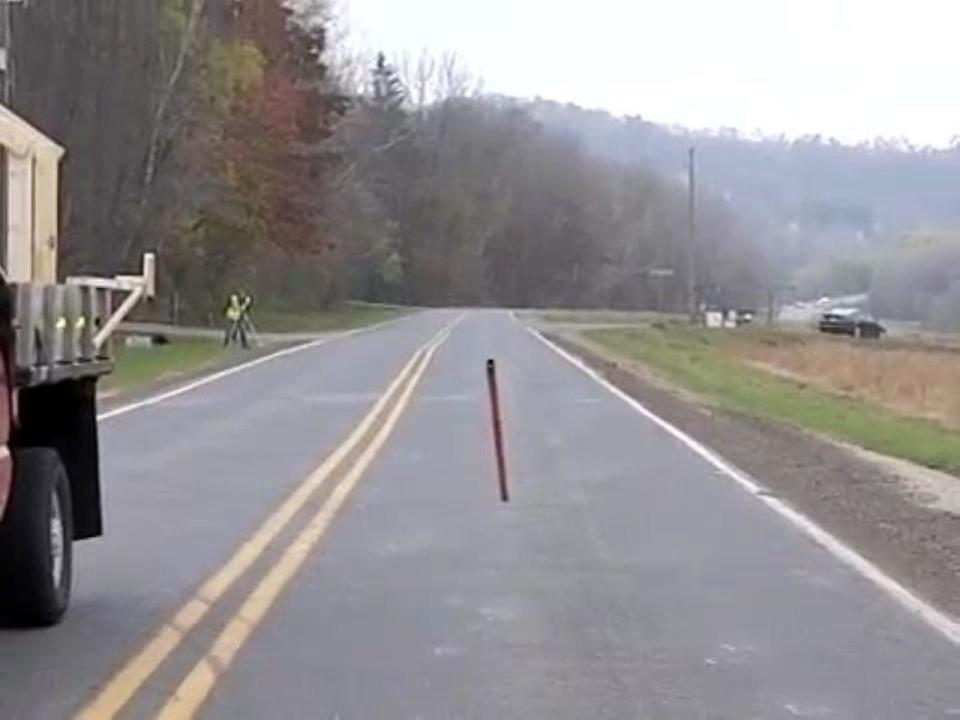
Jerry Buting: Now that one hits on its end and look how it bounces.
Erin Moriarty: And come up really high.
Jerry Buting: It comes up high.
Erin Moriarty: In your mind these videos show that it could have happened.
Jerry Buting: That's the point. Yes.
Which contradicts state investigators who, from the beginning, had suggested that a pipe slamming through Todd's windshield was next to impossible. INVESTIGATOR [during interrogation]: What are the odds that that would happen to a guy that changes out windshields? I mean, what do you suppose those odds are? One in a trillion if at all?
Buting and Stilling introduced evidence from across America to prove it's more common than you think.
Jerry Buting (referencing video evidence): This one is in — near Bakersfield, California, a pipe that looks remarkably similar that went right through this person's vehicle. Here's another one. … This one's Houston, OK.
Erin Moriarty: And it goes right through and hits —
Jerry Buting: Would've killed —
Erin Moriarty: A passenger.
And it turns out you don't have to be an expert to find a piece of pipe along a country road.
Jessica Servais: There was another pipe on the road up the ways … that someone found.
Erin Moriarty: There was a pipe, and when was that pipe found?
Jordan Kendhammer: Shortly after.
Erin Moriarty: And it was very similar to the one that went through the windshield?
Jordan Kendhammer: Same diameter, same material.
Erin Moriarty: What do you think happened?
Jordan Kendhammer: I believe the pipe came through and hit mom.
That belief in their father would not waver. Still how could the experts at trial see a case so differently? We decided to ask another forensic pathologist to take a fresh look at the evidence. Lindsay Thomas: The more I looked at it, the more I understood why it's so complicated.
A COMPLICATED CASE
Dr. Lindsey Thomas is a forensic pathologist who has performed about 5,000 autopsies.
Dr. Lindsey Thomas: If it didn't happen the way Todd says it happened, then how did it happen?
Dr. Lindsey Thomas: This is the kind of case where it isn't that clear cut.
"48 Hours" asked her to review the medical evidence in this case – including Dr. McCubbin's autopsy report.
Dr. Lindsey Thomas: The original autopsy was very well done and the conclusions that they reached were very reasonable.
Still, Dr. Thomas says she wouldn't have reached some of the same conclusions.
Dr. Lindsey Thomas: And that's what makes this case so challenging.
The most troubling injury for her is that cricoid fracture on Barbara's neck. She agrees with Dr. Teas, the forensic pathologist who testified for the defense in the evidentiary hearing and does not believe that Barbara was strangled.
Dr. Lindsey Thomas: I've never seen a fractured cricoid in strangulation. … I wouldn't say it absolutely can't happen, but certainly I haven't seen it, I haven't read about it, I haven't heard about it … it seems more consistent with the kind of thing that would happen — in a weird car crash.
And she believes the injuries to the back of Barbara's head were too severe to have been caused by Todd's fists. But she says Barbara could have been hit with a heavy object like her mug.
Dr. Lindsey Thomas: Yeah, it would have to be a substantial coffee cup. But I understand there was a pretty substantial coffee cup in the car.
Ultimately, Dr. Thomas can't say for sure how Barbara sustained her injuries.
Dr. Lindsey Thomas: Based on just the medical evidence alone, it wouldn't be one where … you could definitely say, "Oh, this is clearly a homicide or clearly an accident."
Erin Moriarty: The idea that a man is sitting in prison, does that concern you?
Dr. Lindsey Thomas: Well, it always does when you have a case like this that isn't clear cut. … You just worry a little that the evidence was given too much weight one way or the other, or the jury wasn't given all of the relevant materials.
Erin Moriarty: Had you ever served on a murder trial before as a jury member?
Tim Brennan: No. Not ever.
Tim Brennan, the jury foreman, says he found Dr. McCubbin's testimony very convincing. We shared with him some of the new information from the evidentiary hearing, including Dr. Teas' conclusions.
Erin Moriarty: If you had heard a medical examiner disagree with Dr. McCubbin … would that have made a difference?
Tim Brennan: Without hearing the full extent … of that — it's hard to say.
Still, he stands by the jury verdict.
Tim Brennan: When Todd Kendhammer … gave his testimony … He just came across as a person with a lot of falsehoods.
Erin Moriarty: When you say falsehoods, did you feel he was lying?
Tim Brennan: Definitely.
Tim Brennan: I'm very confident that we got it right.
As the Kendhammer family awaits the judge's ruling, Todd is serving his life sentence more than two hours away from his kids.
Erin Moriarty: What do you miss the most about your mom and having your dad around?
Jessica Servais: I used to be annoyed … that he would call me all the time, and like always come over, but I kind of miss it now (crying). … I just miss having them around all the time.
And Jessica's daughter Carlin is growing up without her grandparents.
Jessica Servais: Their dream was always to do stuff with their grandkids … so it's just hard not to have him with her.
Now, Jessica and Jordan and all those who believe in Todd Kendhammer continue to wait, hoping he gets another shot at what they believe is justice.
Erin Moriarty: Do you think your dad will be coming home?
Jessica Servais: Yes. … We aren't going to stop until he can be home.
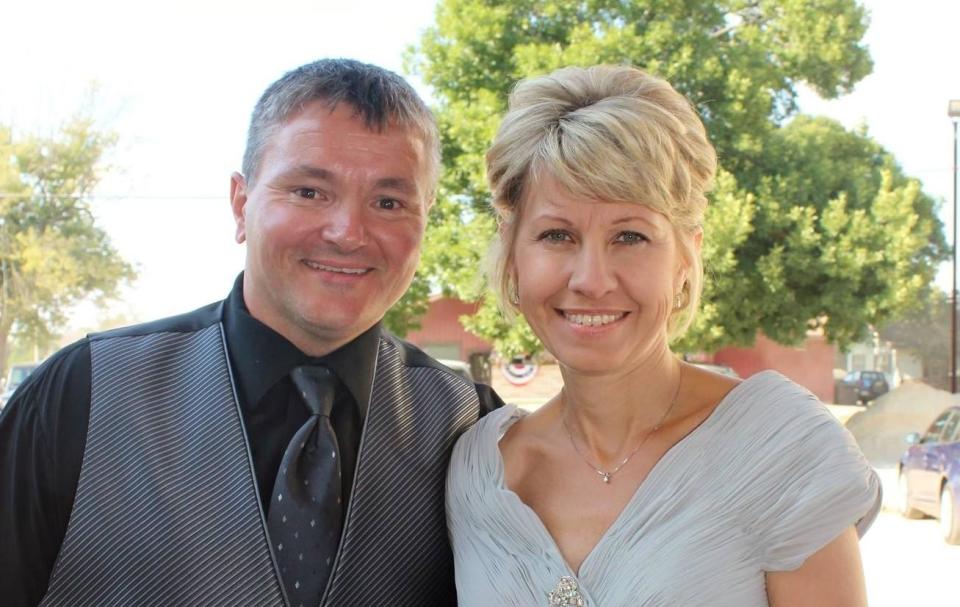
Prosecutor Gruenke believes justice has already been served for Barbara Kendhammer.
Erin Moriarty: Do you have any concerns at all that you might have convicted an innocent man?
Tim Gruenke: Not in this case, no.
In May 2022, a judge denied Todd Kendhammer's request for a new trial.
Kendhammer is planning to appeal that decision.
Produced by Chris Young Ritzen, James Stolz, and Dena Goldstein. The development producers are Charlotte Fuller and Julie Kramer. The editors are Gary Winter, Doreen Schechter, Joan Adelman and Marcus Balsam. Lourdes Aguiar is the senior producer. Nancy Kramer is the executive story editor. Judy Tygard is the executive producer.
Houston Texans stand in solidarity with Uvalde football team for season opener
Agave proving to be an ideal crop in California
Shelling continues near Zaporizhzhia nuclear plant despite arrival of U.N. inspectors

